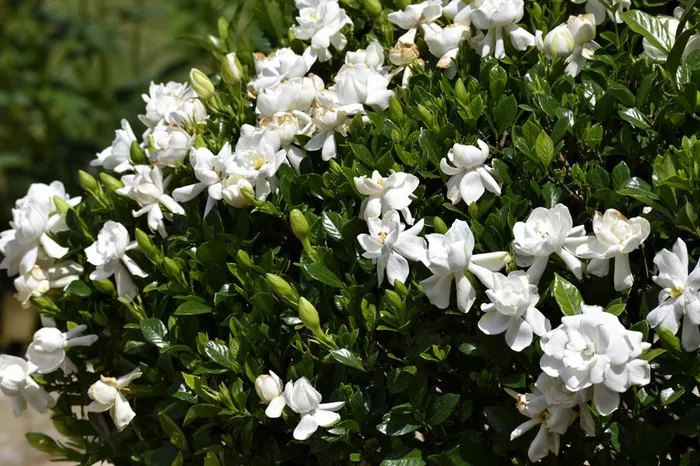Gardenia bonsai trees are renowned for their elegant beauty and delicate fragrance, making them a popular choice among bonsai enthusiasts. However, their care can be quite challenging, requiring attention to detail and a deep understanding of their specific needs. In this comprehensive guide, we will delve into the essential aspects of caring for gardenia bonsai trees, from cultivation and pruning to pest control and troubleshooting.
Understanding Gardenia Bonsai Trees
Before delving into care instructions, it’s vital to grasp the fundamentals of gardenia bonsai trees. Gardenias (Gardenia jasminoides) are evergreen shrubs native to Asia, renowned for their waxy, white flowers and glossy dark green leaves. Bonsai cultivation transforms these shrubs into miniature masterpieces, embodying the harmony of nature in a compact form.
Gardenia bonsai trees thrive in temperate climates and prefer bright, indirect sunlight. They are sensitive to environmental changes, necessitating stable conditions to flourish. Understanding their botanical requirements is the cornerstone of successful care.
Cultivation and Environment
1. Choosing the Right Location: Gardenia bonsai trees thrive in bright, indirect sunlight. Place your bonsai near a window where it can receive ample light without being exposed to direct sunlight, which can scorch its delicate leaves.
2. emperature and Humidity: Maintain a consistent temperature range between 65°F to 75°F (18°C to 24°C) for optimal growth. Gardenias prefer high humidity levels, so consider using a humidity tray or a room humidifier, especially during dry winter months.
3. Soil and Potting: Use a well-draining, acidic soil mix specifically formulated for gardenias or azaleas. Repot your gardenia bonsai every two to three years during the spring, replacing old soil with fresh, nutrient-rich mix.
4. Watering: Keep the soil evenly moist, but avoid waterlogging, which can lead to root rot. Water your gardenia bonsai when the top inch of soil feels dry to the touch, and ensure proper drainage to prevent water stagnation.
Pruning and Shaping
1. Regular Pruning: Pruning is essential for maintaining the shape and health of your gardenia bonsai. Remove dead, diseased, or overgrown branches using sterile pruning shears, making clean cuts at a 45-degree angle.
2. Pinching and Defoliation: Pinch back new growth regularly to encourage branching and compact foliage. Additionally, selective defoliation can help balance the tree’s energy distribution and promote ramification.
3. Wiring Techniques: Use bonsai wire to shape and style your gardenia bonsai, but exercise caution to avoid damaging the branches. Check the wire regularly and remove it promptly once the desired shape is achieved to prevent wire scars.
Fertilization and Nutrient Management
1. Balanced Fertilizer: Use a balanced, water-soluble fertilizer formulated for acid-loving plants, applying it at half-strength every two weeks during the growing season (spring to fall). Reduce fertilization frequency during the winter months.
2. Micronutrient Supplementation: Gardenia bonsai trees may benefit from occasional micronutrient supplements, such as iron chelates or Epsom salt, to prevent nutrient deficiencies and enhance foliage color.
Pest Control and Disease Prevention
1. Vigilant Monitoring: Regularly inspect your gardenia bonsai for signs of pests, such as aphids, mealybugs, scale insects, and spider mites. Early detection allows for prompt intervention and prevents infestations from spreading.
2. Natural Remedies: Combat pest infestations with natural remedies like neem oil, insecticidal soap, or horticultural oil. Apply treatments according to the manufacturer’s instructions, ensuring thorough coverage of both foliage and soil.
3. Disease Management: Prevent fungal diseases like powdery mildew and leaf spot by maintaining proper air circulation, avoiding overhead watering, and keeping the foliage dry. If disease symptoms occur, promptly remove affected leaves and treat with fungicides if necessary.
Troubleshooting Common Issues
1. Yellowing Leaves: Yellowing leaves can indicate various issues, including overwatering, underwatering, nutrient deficiencies, or root rot. Evaluate environmental conditions and adjust watering and fertilization accordingly.
2. Leaf Drop: Excessive leaf drop may result from stress, improper watering, low humidity, or pest infestations. Address underlying issues promptly and provide optimal care to promote foliage retention.
3. Bud Blast: Bud blast, characterized by the premature dropping of flower buds, can occur due to fluctuations in temperature, humidity imbalances, or inadequate pollination. Maintain stable growing conditions and provide proper care to prevent bud blast.
Conclusion
Caring for gardenia bonsai trees requires dedication, patience, and a deep appreciation for their unique beauty. By understanding their specific needs and providing attentive care, you can cultivate healthy, thriving specimens that bring tranquility and elegance to any space. Embrace the art of bonsai cultivation, and let your gardenia bonsai flourish as a testament to your gardening prowess and devotion.


